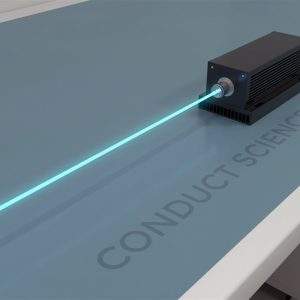$590.00 – $690.00Price range: $590.00 through $690.00
The open-field tower maze (OFTM) stands out as a distinctive behavioral task in neuroscience, tailored for investigating spatial learning and memory mechanisms in rodents, particularly focusing on place- and response-learning. These inserts are designed to complement any Morris Water maze setup. Please note that the price mentioned does not cover the Morris Water maze itself, which is available for separate purchase.

MazeEngineers empowers preclinical neuroscience research with meticulously designed, customizable behavioral apparatuses. From manual classic mazes to fully automated smart systems, we provide the tools scientists need to capture high-quality, reproducible data for studies on learning, memory, anxiety, and depression.




The open-field tower maze (OFTM) is a unique behavioral task in neuroscience used to examine the nature and mechanism of spatial learning and memory in rodents; with specific emphasis on place- and response-learning. The task is conducted in a way that does not stress the subjects; as stress can alter the result of the experiment (Luine et al., 1994; Beck & Luine, 2010). The OFTM paradigm is based on the fact that a non-stressed rat is able to navigate through a maze with the aid of spatial cues (i.e. place-learning); and make a specific turn response (either to the right or left to find a food reward), irrespective of its position relative to spatial cues (i.e. response-learning).
Central to this behavioral task is the fact that rodents easily remember spatial locations, especially when spatial cues like food are used as incentive. The OFTM consists of a circular platform with food towers fixed at certain points around the central area of its perimeter, one of which contains the food reward. For place-learning, the task is similar to other paradigm such as Morris Water Maze, Y-maze and T-maze that require the use of hippocampal-dependent spatial reference memory. However, response-learning is dependent on the striatum (Poldrack and Packard, 2003). Basically, this ability to remember the location of the target tower can be effected by the administration of certain drugs (e.g estradiol) or in disease models (Lipatova et al., 2014).
Cole et al., (2007), traced the theories of learning back to Hull (1943) with particular emphasis on the learning of motor responses; and how mazes such has the cross maze has been used to better parse either place or response learning in rats since 1946 by Tolman, Ritchie and Kalish. The OFTM is an improved version of other open-field mazes developed hitherto to assess spatial learning in rodents.
The OFTM setup comprises a circular floor, 183 cm in diameter, featuring four food towers spaced 54 cm apart, affixed to its center portion. Encircling the floor is a boundary wall, 40 cm in height, crafted from white laminate. The inner surface of this wall is intricately painted with various patterns: one quarter adorned with black and white stripes, another quarter solid black, followed by a quarter with white and black circles, and the final quarter solid white. The floor itself is constructed from black laminate, securely fastened atop a plastic table.
Each of the four food towers is square-shaped, measuring 8 cm x 8 cm x 20 cm, composed of white PVC post. Their tops are capped with black laminate, and at the center of each top sits a black opaque plastic food cup, 2.5 cm in diameter and 2 cm deep, fashioned from a 35 mm film canister and attached with a small screw. These food cups feature screw-top lids with three small venting holes (3 mm diameter), preventing rats from using olfactory cues to locate them. Moreover, the height of the towers precludes rats from investigating the cup contents without rearing.
For pre-training purposes, three temporary “pre-training towers” of identical material to the food towers but differing in height (5 cm, 10 cm, and 15 cm respectively) are affixed to the maze floor during the pre-training phase.
The testing area is dimly lit to facilitate animal visibility and exploration while minimizing stress from bright lights. Background white noise, approximately 70 dB, is generated using a sound machine.
Experiments are recorded from above the maze using a mounted video camera such as Noldus Ethovision XT. Tracking software enables monitoring of animal movements within the maze, with the option for live scoring.
The OFTM serves as a valuable tool for investigating both the behavioral and neurobiological aspects of spatial learning in animals, particularly in the study of place- and response-learning in rats. In place-learning scenarios, animals recall specific food towers previously visited for food rewards, while in response-learning tasks, they execute the correct turn response (right or left) to access food rewards from a tower.
Pre-Training for the Open-field Tower Maze
To encourage food-scavenging behaviors, experimental animals undergo food deprivation overnight before testing, ensuring they maintain approximately 90% of their free-feeding body weight throughout food rationing and testing.
To initiate training and testing, ensure the apparatus is clean and devoid of odors. Place a food reward (fruit pebble) in each uncapped food cup on the seven food towers. Then, randomly place the animal in the maze and allow it to locate and consume all seven food rewards.
Place-training & Response-training Procedures
During training, bait four food towers with food rewards, covering three towers and leaving one (the target tower) open at a time. Rats are divided into place-learning and response-learning groups.
Mark four start locations (SL1-4) in the OFTM and assign each rat two of these start locations, which can serve as release points. Start locations, type of learning (place vs. response), target tower (for place learners), and turn for response learners should be counterbalanced during training and testing phases.
For place training, maintain the same target food tower throughout, releasing the rat from any of its assigned start locations. For example, if Tower 4 (T4) is the target tower, the rat can be released from SL2 or SL4. Place-learners solve the OFTM by locating the specific tower using spatial cues.
For response training, alternate the target tower based on the start location to teach specific turn responses. For instance, to train for a right turn, use T4 as the target tower with SL3 as the release point, or use T2 with SL2. Response-learners solve the OFTM by learning to make a consistent turn regardless of start location.
Testing and Evaluation of Place- and Response-learning using the OFTM
To assess learned behavior persistency, introduce a new start location during the trial phase (start location switch test). Place-learners adapt to the change in start location while still locating the target food tower. Similarly, response-learners maintain their turn response despite the altered start location.
To evaluate learning, count the number of responses (rat rearing up over the food cup) made to find the target food tower in each trial. Calculate the percentage of correct first-choice responses daily to construct learning curves across days. Additionally, determine the number of trials required for rats to meet a predetermined criterion, such as 8 out of 10 consecutive correct first-choice responses.
The OFTM paradigm has undergone adaptation to evaluate the long-term retention of place- and response-learning (Liang et al., 1998; and Lipatova et al., 2006). In this variant, rats undergo a 21-day interval following the initial 48 training trials, during which their long-term memory retention is assessed. Throughout the interval period, subjects remain undisturbed in their cages.
Additionally, the OFTM model proves valuable in examining reversal learning, which pertains to rats’ capacity to acquire new maze skills.
A sample dataset could be generated by examining the impacts of chronic and cyclic estradiol treatments on place- and response-learning in ovariectomized female rats. Chronic estradiol treatment involves daily subcutaneous administration of 10 μg/kg of estradiol to rats (continuous conditioning), while a sham control group receives a placebo (peanut oil). In contrast, cyclic treatment entails estradiol injections at intervals (e.g., every 4th day), with placebo administered on alternate days. In this experiment, half of the rats in each condition undergo place-training procedures, while the other half undergo response-training procedures.
Estradiol has been observed to elicit differential effects on spatial learning and memory (Lipatova et al., 2014). Rats subjected to cyclic estradiol treatment typically require fewer trials to meet the test criterion compared to those in the sham control or continuous conditioning groups. However, the impact on response-learning appears negligible for both cyclic and chronic treatment groups, as subjects in these groups require fewer trials to reach the test criterion than those in the sham control group.
The OFTM stands out for its distinctive attributes, offering three key advantages. Firstly, it ensures a stress-free environment for subjects, setting it apart from other paradigms and making it an exceptional choice for assessing spatial learning under optimal conditions. The absence of stressors, coupled with maze familiarization before testing, enhances observations of working memory performance in animals navigating the maze. Secondly, the OFTM evaluates learning based on the percentage of first-choice responses made by rats to locate food rewards. This metric is significant as it avoids the influence of extraneous factors, such as speed or distance covered, which can affect dependent measures in other mazes like the Morris Water Maze or Barnes Maze. Lastly, the construction of the OFTM limits the probability of animals naturally selecting the correct (target) tower to 25%, reducing the likelihood of employing strategies other than spatial learning to navigate the maze. Thus, the OFTM offers a higher level of objectivity in assessing spatial learning compared to other mazes.
However, a limitation of the OFTM is its exclusive use in assessing place- and response-learning in adult Sprague-Dawley rats. Therefore, beyond extrapolations, little can be inferred about the performance of mice or other rat strains using this paradigm.
Similar to other maze-based assessments of learning and memory, the OFTM acknowledges that subjects’ maze behavior is influenced by various processes. Nonetheless, the OFTM has been specifically engineered to evaluate spatial learning in rodents while mitigating the confounding role of stress, enhancing its utility and reliability (Lipatova et al., 2015).
Beck KD, Luine VN. 2010. Evidence for sex-specific shifting of neural processes underlying learning and memory following stress. Physiol Behav. 99 2: 204–211.
Cole, M.R., Clipperton, A., and Walt, C., Place versus response learning in rats. Learn Behav., 2007. 35 (4): p. 214-224. doi:10.3758/BF03206427 (2007).
Liang, K.C., et al., Buspirone impaired acquisition and retention in avoidance tasks: involvement of the hippocampus. Chin J Physiol., 41 (1):p. 33-44. doi:10.1016/j.bbr.2012.07.009 (1998).
Lipatova, O., Campolattaro, M.M., Toufexis, D.J., Mabry, E.A. Place and Response Learning in the Open-field Tower Maze. J. Vis. Exp.(104), e53227, doi:10.3791/53227 (2015).
Lipatova, O., et al., Effects of continuous vs. cycling estrogen replacement on the acquisition, retention and expression of place- and response-learning in the open-field tower maze. Neurobiol Learn Mem. 114: p. 81-89. doi: 10.1016/j.nlm.2014.05.001 (2014).
Lipatova, O., et al., Recency-to-primacy shift in cue competition. J Exp Psychol Anim Behav Process. 32 (4): p. 396-406. doi: 2006-12924-006 [pii] 10.1037/0097-7403.32.4.396 (2006).
Luine, V., et al., Repeated stress causes reversible impairments of spatial memory performance. Brain Res. 639 (1), p. 167-170. doi: 10.1016/0006-8993(94)91778-7 (1994).
Poldrack, R.A. and Packard, M.G., Competition among multiple memory systems: converging evidence from animal and human brain studies. Neuropsychologia. 2003. 41 (3): p. 245-251. doi:10.1016/S0028-3932(02)00157-4 (2003).
| Species | Mouse, Rat |
|---|
There are no questions yet. Be the first to ask a question about this product.